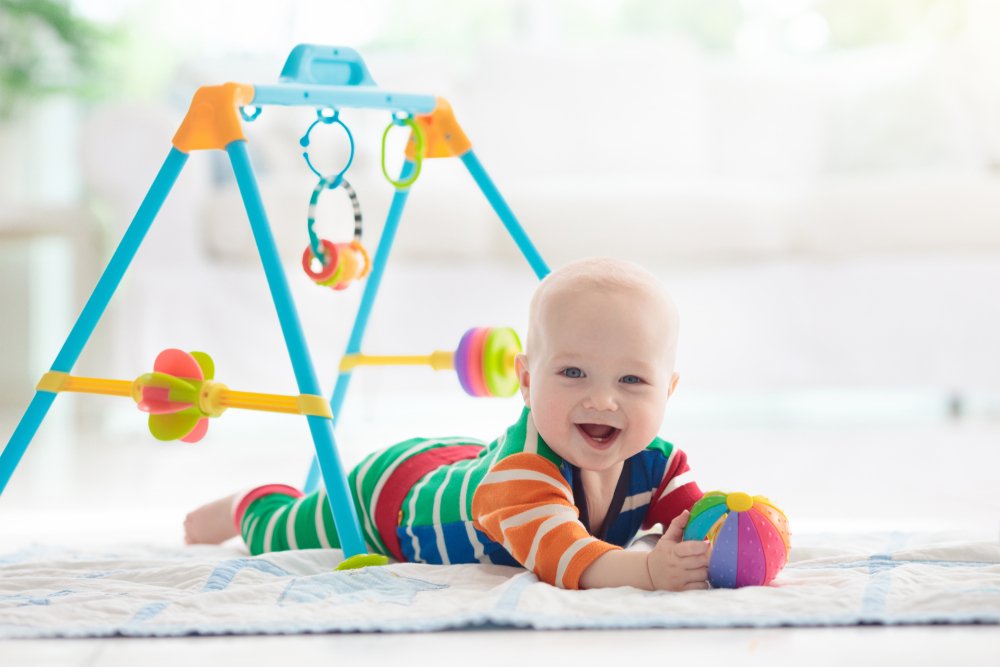Key points:
- Muscle tone is an important factor in a baby’s physical development and affects milestones like sitting, standing, and walking.
- Babies have more than 600 muscles that will grow stronger through natural processes and environmental influences.
- Tips for helping a baby develop muscular tone include exercise, movement experiences, tummy time, and massages.
- Making these activities fun and playful can be beneficial for both the baby and caregiver.
When you hear the term “muscle tone”, what do you think about? You might imagine yourself finally having the time to go to the gym, or even picture a high-performance athlete working on getting the muscle tone just about right. But do you ever think about your baby’s muscle development when hearing this?
Muscle development in babies
Muscle tone is one of the major factors influencing your baby’s physical development. From day one, your little one’s muscular tone is an important subject. Most babies come into the world with a good muscle tone that allows them to move. Even at such an early stage, we can observe wiggling and squirming movements of their arms and legs.
This amazing event happens because your baby has more than 600 muscles in their tiny body, which will grow stronger and stronger each day, improving their movement and coordination. This will determine the accomplishment of some of your baby’s major milestones, like head control, sitting, standing up, walking, and running.
How will these muscles grow to be stronger?
It may seem a natural and easy task but think about your own muscular tone, do you just gain it magically or is there something you do?
Even though your baby will gain muscular tone through a natural process, it can also be influenced by their environment, which means there’s something you can do to help them become stronger. Here are some tips to help your baby develop muscular tone:
Exercise
Play with your baby every day. You can gesture and make them smile and then move a few inches away. They will stretch their arms and legs to try and touch you. As small as this movement may seem, it is helping them strengthen some of their muscles. You can also move toys away from them to help them practice their head movement, working directly with their neck muscles.
Movement experiences
When you move your baby, you are stimulating the balance sense in the inner ear, which will also contribute to gaining muscle tone and, in general, helps develop all movement processes. Carry your baby and move slowly while you sing or dance, or even stretch their arms and legs to simulate dancing. Moving their limbs and joints is great for their muscular development as well!
Tummy time fosters muscle development
Place your little one on their tummy. While being in this position they’ll have to push up, turn their neck, and move around a bit to explore their surroundings, which contributes to muscle strength. If they don’t like this position, make the tummy time periods shorter or place a mirror in front of them so they have something to focus on; that also encourages them to lift their head.
Massage
This will help to strengthen their bones, muscles, and immune system. You can also gently roll your hands over your baby’s body to stimulate their muscles.
Most of all, have fun! Even activities that are not usually your baby’s favorite, will fly by when having fun. Include games and toys, smile, and make them feel you’re close. It will work as a charm!








